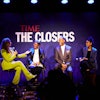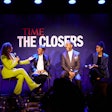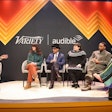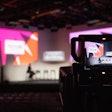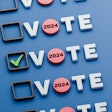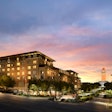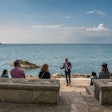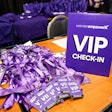According to the U.S. Census, the United States will become a minority majority nation by 2044, based on current population projections. That creates challenges and opportunities in the meetings and hospitality industries when it comes to diversity and inclusion programs hoping to mirror the workforce.
“I would say we’ve done a good job of building awareness of the issue, bringing the discussion forward,” says Matthew Marcial, vice president of education and events for MPI. “That is bringing the discussion forward and having conversations we weren’t having before.”
Melvin Tennant, president and CEO of Meet Minneapolis, says many organizations have diversity and inclusion efforts in place. But, he adds, work remains as not all of those efforts have not been sustained—a fact highlighted by many in conversations stemming from the recent #BlackLivesMatter protests.
“Some of those efforts have been in reaction to a situation of some sort, but I would say, in general, we are working to see our industry become more diverse,” Tennant says. “It cannot happen overnight, but clearly, we must set up mechanisms to set up a pipeline of talent from a variety of sources at all levels.”
That talent needs to come from all walks of life, with no regard to gender, race, sexual orientation, or national origin, Tennant says.
Anne Thornley-Brown, president of Executive Oasis International, a Toronto-based company specializing in the design and facilitation of executive retreats and teambuilding, says the industry is not going far enough. Talented men and women of color are “invisible” to industry leaders, she says.
“When it comes time to selecting thought leaders or voices in our industry, when you look at the list and photos of leaders in our industry, they are usually white, both in Canada and the United States,” Thornley-Brown says. “This is 2018. There is no reason to put out a 25 most influential women’s list and every last one of them is white. How is that even possible?” She says it’s time to stop being silent about the inequity.
Getting Involved
MPI, where women comprise 80 percent of the community and audience, has been focusing on fostering women leaders, Marcial says.
In early 2017, MPI launched its Diversity & Inclusion Task Force. In June, the organization introduced several new education offerings from its MPI Academy as part of its new Executive Education Series, including the new Women in Leadership Program.
There is an Executive Leadership Skills Certificate Course as part of the Women in Leadership Program, but the academy also offers other diversity education, such as uncovering hidden bias in the workplace and working with transgender and genderfluid communities.
“We want to see more diverse representation in meetings and events,” Marcial says, “and more women in more higher-level leadership, especially in our industry.”
Shining Examples
Meet Minneapolis, too, works to create a diverse workplace. USBank Stadium, which recently hosted Super Bowl LII, and the Minneapolis Convention Center have an “extremely diverse staff,” Tennant says. “That’s very apparent when you attend events or meetings with staff at both locations. Those are two shining examples in our city.”
Tennant believes there is a strong business case for diversity.
“If you look at how any business consumer base is going to change, and you want to appropriately reach certain customers, it makes sense that you would want to have people skilled to reach certain customers,” he says. “I hope our industry as a whole will recognize that when making decisions about hiring leaders and public-facing positions in our industry.”
Meet Minneapolis is doing that with its Diversity and Multicultural Action Committee, or DMAC, which was formed to help Meet Minneapolis follow-through on its policy for diversity and inclusion, Tennant says.
“DMAC looks at a number of different dimension of diversity for us—the composition of our board, our staff level—and helps us engage with the community,” Tennant says. “It is very much a part of the fiber of our organization. This is a marathon, not a sprint. We know we will have work to do, but we’ve made progress on these issues.”
Diversity as a Given
Thornley-Brown says hers is a boutique operation and for her, diversity is a given, not something she has to think about or strive toward.
“I’m from Jamaica and I work all over the world,” she says. “I’m constantly surrounded by a diverse group of people. That’s why I don’t understand why it is so hard. Is it naiveté, or such a lack of awareness, or are people being deliberately screened out? I would hope in 2018 that was not happening.”
For her, diversity and inclusion has a long way to go in the industry.
“I’m hoping that by having conversions like this, there will be more awareness,” says Thornley-Brown. “Why is this important? Because when people have work projects, whether a corporate event or being on a panel, if you aren’t mentioned, you are invisible. Visibility is very important.”



